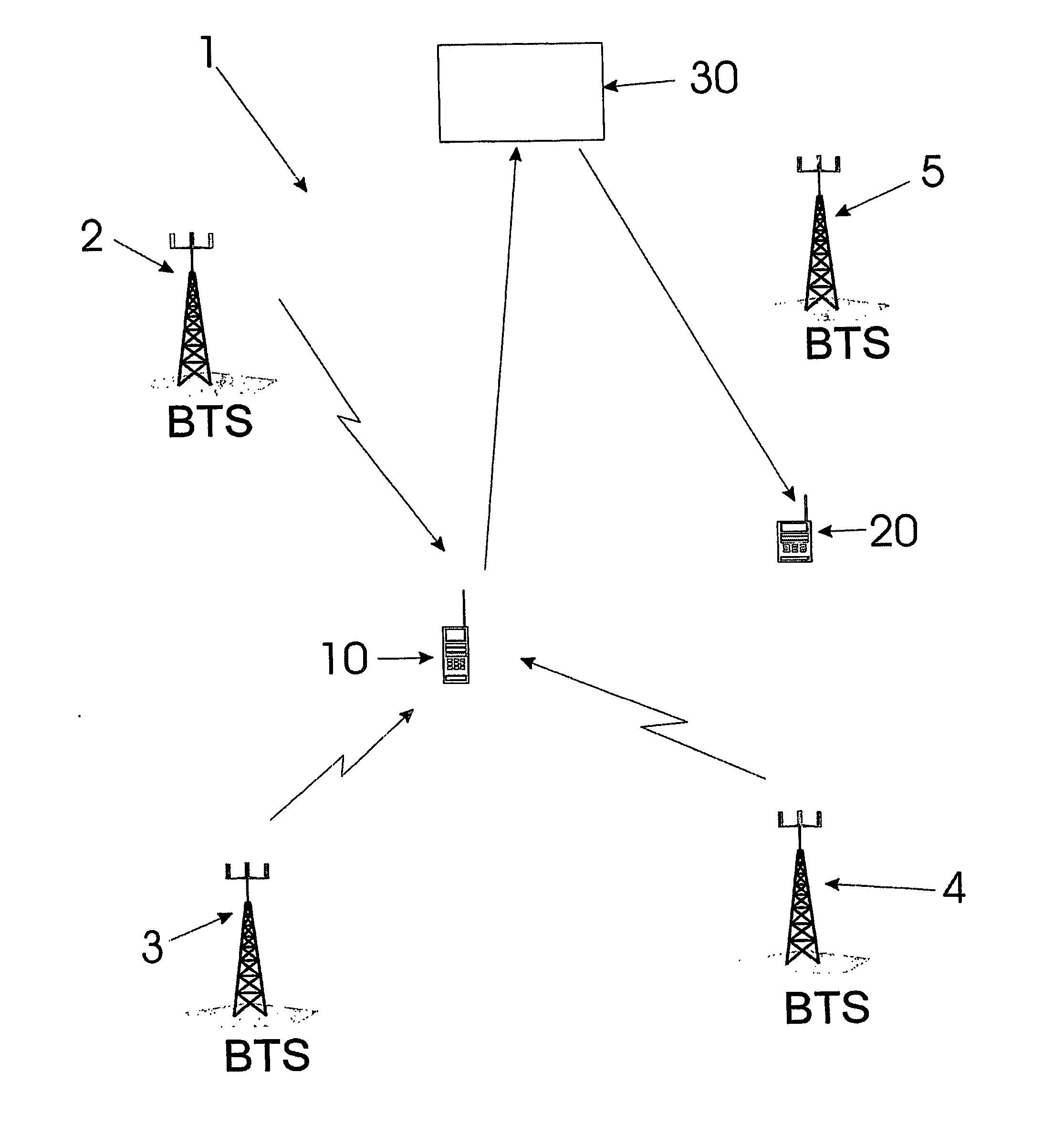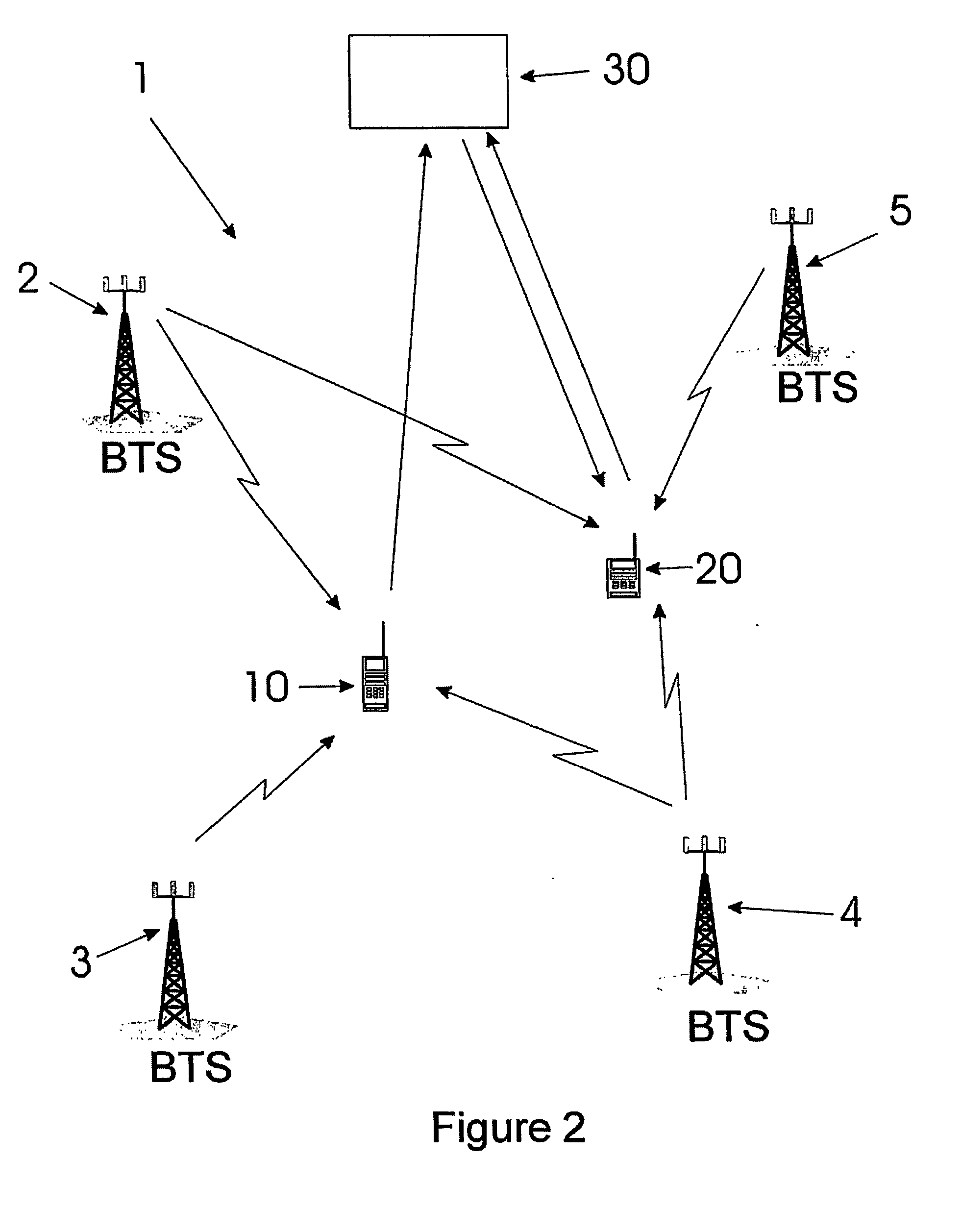Method and apparatus for finding a mobile radio terminal
a mobile radio terminal and mobile technology, applied in the direction of supervision/control auxiliaries, instruments, navigation instruments, etc., can solve the problems of inability to consider a useful homing system, random errors in the initial angle of arrival measurement, and poor performan
- Summary
- Abstract
- Description
- Claims
- Application Information
AI Technical Summary
Benefits of technology
Problems solved by technology
Method used
Image
Examples
Embodiment Construction
[0043] In the following description, the homing system refers to the combination of the processing means for estimating relative position, selecting search routes, etc. and the homing device. The homing device refers to the device carried by the user through which the system communicates with the user. On occasions, the term “seeker” may be used, which may refer to the homing device itself or a User of the homing device, or the combination of the User and the homing device.
[0044] In the following paragraphs a series of methods are disclosed which can be used to implement an effective system for homing in on a mobile radio terminal. These methods can be applied in different combinations depending on the nature of the application and the technical and economic constraints that affect that application. To aid in understanding the different methods and the circumstances under which they could be used, the possible homing applications are arranged into three groups according to the capa...
PUM
 Login to View More
Login to View More Abstract
Description
Claims
Application Information
 Login to View More
Login to View More - R&D
- Intellectual Property
- Life Sciences
- Materials
- Tech Scout
- Unparalleled Data Quality
- Higher Quality Content
- 60% Fewer Hallucinations
Browse by: Latest US Patents, China's latest patents, Technical Efficacy Thesaurus, Application Domain, Technology Topic, Popular Technical Reports.
© 2025 PatSnap. All rights reserved.Legal|Privacy policy|Modern Slavery Act Transparency Statement|Sitemap|About US| Contact US: help@patsnap.com



